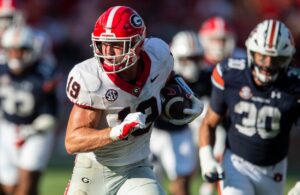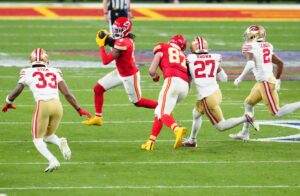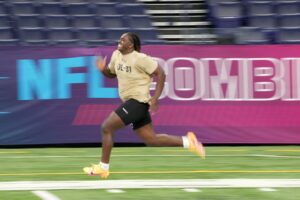Up next in our newest series, “The Breakdown,” we make our way through the NFC and take a look at the Washington Redskins schematic philosophy. The contractual debacle surrounding quarterback Kirk Cousins was a major NFL story-line this off-season and his importance to this system cannot be overstated. Let’s take a look at what Washington’s offense asks of Cousins, as well as what to expect from the other side of the ball.
The Breakdown: A Look at the Washington Redskins Schematic Philosophy
The Importance of Design
Head coach Jay Gruden and former offensive coordinator Sean McVay spent the last three seasons constructing a fluid, efficient passing game centered around play-action. Their play-action game is built on attacking all levels of the field through specific coverage beaters, while the use of multi-tight end sets has become a way to provide Cousins with different targets (thus affecting play design). The multi-tight end sets also help marry a successful running game off of the passing game. Plus, defenses look to match heavy sets with heavy sets of their own; the Redskins tight ends are too athletic for these sets and provide the offense with an effective matchup advantage.
How Washington manages to fill the voids left by DeSean Jackson and Pierre Garcon remains to be seen. Jackson’s vertical skills were incredibly beneficial to the intertwined route concepts that Gruden employed down the field. These route concepts isolated specific defenders and managed to expose defenders compromised positioning when handling these concepts on the fly.
Garçon became a viable intermediate threat with catch-and-run potential on these deeper concepts where Jackson’s vertical stretch naturally created voids in the middle of the field. This aspect often carried over into Jackson as a decoy who, because of that vertical prowess, would draw safety help over the top and bracketed coverage down the field, thus allowing for one-on-matchups elsewhere.
For as difficult as it will be replace two talents, the Redskins brought in rising star Terrelle Pryor from the Cleveland Browns and are looking at the a fully-healthy Josh Doctson, their first round pick a year ago. The progression of another member of their wideout group, Jamison Crowder, provides another added dimension that suits this system well. None of these aforementioned pass catchers are the vertical burner that Jackson was, but the use of switch-releases off the line, multiple different splits and alignments and the diversity of design shouldn’t decrease the level of expectations of the trio.
Zone-Based Expectations
Last season’s linebackers coach Greg Manusky enters his first season as the Redskins defensive coordinator, replacing Joe Barry, but not his predecessor’s zone system. While Barry often mixed-in man looks, Washington was primarily a zone team in 2016 with basic concepts before the additions of pattern-matching principles and disguised zone concepts. Manusky has experience with both coverage types and ones that were littered with pressure concepts, so do not expect much to change aside from Manusky’s use of man.
The predicament that Barry landed himself in last season was his use of man coverage sans the blitz that is generally accompanied by such defense. Barry felt comfortable with four-man rushes in his man looks, but asking your defensive backs to hold their man-coverage responsibilities for nearly three seconds is unreasonable and a recipe for disaster that stems from this idea. Hence, why Washington spent their first pair of 2017 draft picks on Alabama pass rushers Jonathan Allen and Ryan Anderson with the expectation of the former kicking inside in nickel packages. The coverage-based system Barry constructed last season requires effective pass rushers as well, so Manusky has the potential to become more flexible with his looks as the season wears on.
Such a use of nickel packages is going to be an intriguing possibility for a versatile group of defenders. With linebacker Trent Murphy out for the season, Preston Smith will likely be tasked with handling strong-side linebacker duties albeit his limited pass rushing snaps from the strong-side due to his marginal athleticism; this is where Anderson has the chance to shine. The duo of D.J. Swearinger and Su’a Cravens provide the Redskins with two reliable box defenders, but have not proven they can handle center field duties quite yet. Therefore, former corner Will Blackmon might challenge for a significant number of those snaps. Nevertheless, flexibility on defense is invaluable in blitz packages, overall disguise and the ability to eliminate mismatches in today’s NFL.
The Dallas Cowboys are unquestionably the most talented team in the NFC East, but the Redskins offer a legitimate argument for that second spot. The addition of Pryor will do wonders and there is an expectation around the franchise that Doctson can still grow into the receiver they expect. The offensive line is talented, the defense added pass rushers and there is expected continuity on that side of the ball. After a number of close loses last season, Washington looks to be square in the Wild Card hunt entering the 2017 campaign.
Main Image:






